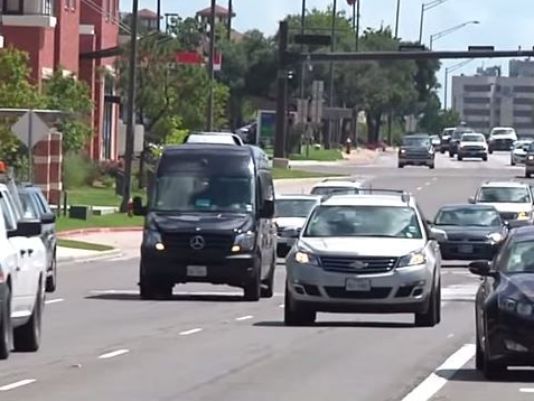What Is the Problem?
Travel forecasting affects transportation professionals on a number of levels, from planners and stakeholders to decision-makers and members of the general public. Currently, forecasting is assessed with trip-based travel demand models. However, these models are considered static, since the process of collecting the information doesn’t take into account actual travel demand in a system around the clock. Because data gathered is incomplete in terms of completely representing the system, basing travel forecasts on it can yield imperfect models that end up being less than effective at mitigating congestion.
What Is the Solution?
Another way to measure trip-based travel demand is through a more dynamic data-analysis process, a procedure that researchers at TTI were asked to test and compare with the current static model. Like static measurements, dynamic traffic assignments (DTAs) are applied to determine traffic volumes resulting from traffic demand, but are better suited to assessing variations in traffic patterns involving turn and managed lanes. By looking at dynamic, simulation-based models, researchers can determine if they could replace the less reliable static models for operational planning and traffic management. For this study, researchers used the Bryan-College Station area as the testing site.
How Was the Study Done?
Researchers assessed traffic demand conditions in Bryan-College Station by dividing the area into 491 traffic analysis zones (TAZs). Researchers sent out household travel surveys throughout Brazos County to determine travel demand. Using a three-step model, researchers then evaluated trip generation, trip distribution, and mode choice. Some examples of trip purposes listed in the survey were:
- HBW: home-based work trips.
- HBNW: home-based non-work trips.
- NHB: non-home-based trips.
- TRTX: truck trips.
Since results were collected using static assignment techniques, researchers had to convert them to the DTA model. Results from the DTA model showed an overall volume count of 113 percent when compared to real-world results, only 13 points from the observed reality. The largest discrepancies between the real-world results and the DTA simulation results occur on connections that had smaller (less than 5,000) total vehicle-miles travel.
Where to Go from Here
While researcher said the results from the Bryan-College Station study appear promising for DTA modeling in the future, there is still more research to be done. Researchers are currently looking at the applicability of using this methodology in a border environment to forecast traffic patterns across the U.S./Mexico border. Because DTA requires more computing resources and data storage—and takes longer to process—agencies are reluctant to shift to the more dynamic forecasting model. If transportation professionals will work with DTA to determine more efficient ways to use it, dynamic traffic forecasting could become the state’s go-to method for better handling real-world traffic demands in a border area where passenger and freight vehicles interact.
Project Title
Integrating Traditional Trip-Based Models with Dynamic Traffic AssignmentProject Number
186054-00006
Project Sponsor(s)
Center for International Intelligent Transportation Research
Project Category
Mobility
Project Termination Date
August 2014
Project Publications
For More Information
Jeff Shelton
Associate Research ScientistResearch & Implementation - El Paso – 4050 Rio Bravo Dr., Suite 212
Texas A&M Transportation Institute
The Texas A&M University System
El Paso, TX 79902
Ph. (915) 532-3759
j-shelton@tamu.edu
